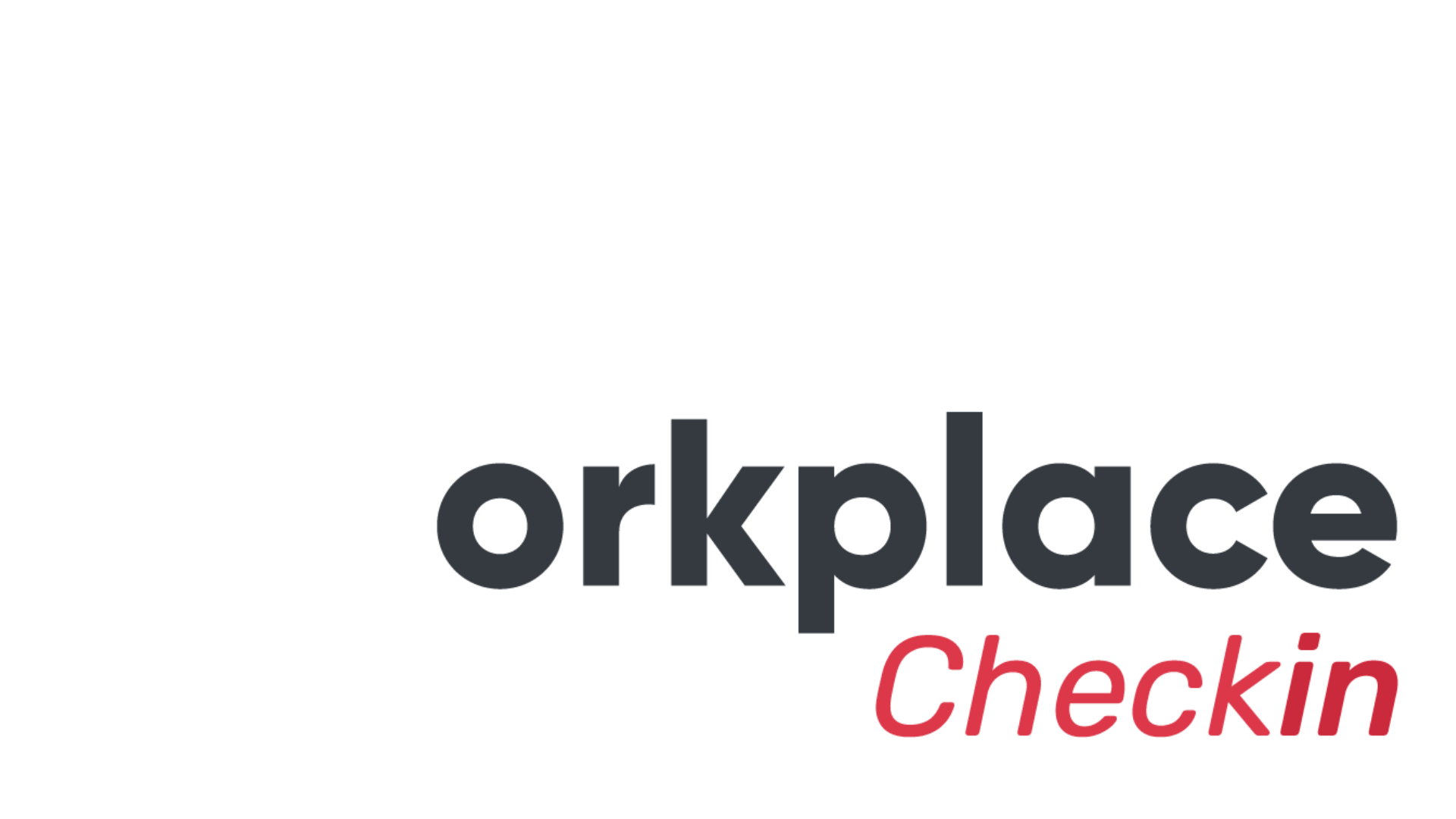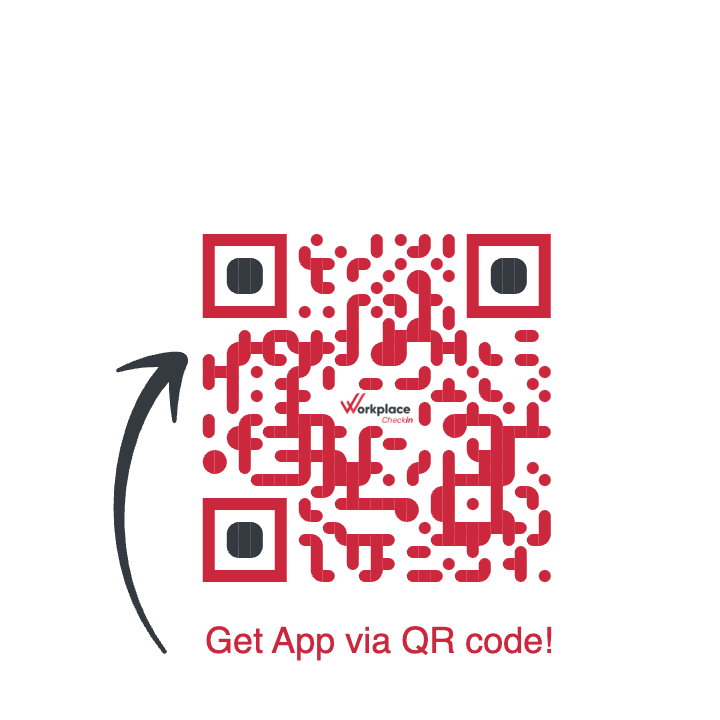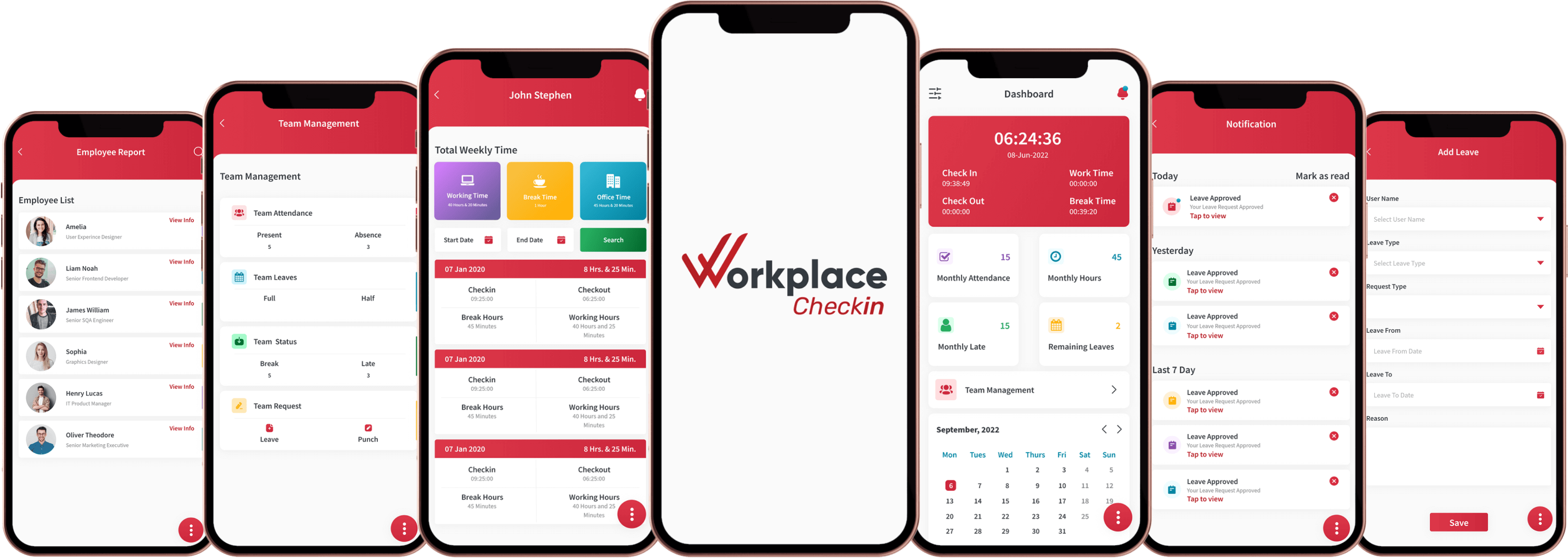

From A to Z: Understanding HRMS and Its Impact on Modern Businesses
Introduction
In the fast-paced and dynamic landscape of modern businesses, the efficient management of human resources is paramount to success. At the heart of this management revolution lies the Human Resource Management System (HRMS), a technological marvel designed to streamline, optimize, and elevate HR operations within organizations. This comprehensive guide seeks to demystify HRMS, taking readers on a journey from the fundamental definitions to the profound impact it has on contemporary enterprises.
Definition of HRMS
To embark on this exploration, it is essential to understand what HRMS truly entails. Human Resource Management System, or HRMS, refers to a comprehensive software solution crafted to centralize and automate various HR functions. From talent acquisition and onboarding to performance management and payroll administration, HRMS acts as a cohesive platform that empowers organizations to manage their workforce efficiently and strategically.
Evolution of HRMS in Business
The introduction delves into the historical context, tracing the evolution of HRMS in response to the ever-changing needs of businesses. From the rudimentary HR systems of the past to the sophisticated, data-driven solutions of today, the narrative highlights how HRMS has become an integral part of organizational success.
Significance of HRMS in Modern Businesses
In the contemporary business landscape, where agility, efficiency, and data-driven decision-making are paramount, HRMS emerges as a game-changer. This subsection explores the profound significance of HRMS in modern businesses, shedding light on how it transcends traditional HR functions to contribute strategically to organizational goals.
Purpose of the Guide
The introduction concludes by outlining the purpose of this comprehensive guide. It is not merely a technical exploration but a journey that aims to empower businesses and individuals with the knowledge needed to understand, implement, and harness the full potential of HRMS. As we navigate through the guide, each section will unfold layers of information, from the basics of HRMS to its application in global settings, future trends, and real-world case studies, providing a holistic understanding that transcends the A to Z of Human Resource Management Systems.
The Basics of HRMS
What is HRMS?
At the core of any discussion on HRMS lies a fundamental question: What is HRMS? This section is dedicated to providing a comprehensive answer. Human Resource Management System (HRMS) is an integrated software solution designed to streamline and consolidate various human resource functions within an organization. It acts as a central hub, bringing together disparate HR processes into a unified platform. From employee data management to payroll processing, HRMS serves as the digital backbone of HR operations.
Components of HRMS
Delving deeper, we explore the key components that constitute an HRMS. Each component serves a distinct purpose, contributing to the overall efficiency of HR processes.
Human Resource Management System (HRMS) is a multifaceted solution that integrates various components to streamline and enhance HR functions within an organization. Understanding the core components is crucial for comprehending how HRMS operates as a unified platform. Let's delve into the key components:
Core HR
Definition: Core HR is the foundational component of HRMS, serving as the central repository for essential employee information.
Functionality:
Employee Information: Core HR manages critical employee data such as names, addresses, contact details, and job titles.
Organizational Hierarchy: It establishes and maintains the organizational structure, including reporting relationships and departmental affiliations.
Employee Records: It keeps track of historical and current employee records, facilitating a comprehensive view of an individual's employment journey within the organization.
Employee Self-Service
Definition: Employee Self-Service (ESS) is a component that empowers employees to access and manage their personal information.
Functionality:
Personal Information Updates: ESS allows employees to update personal details, including contact information and emergency contacts.
Leave Requests: Employees can submit and track leave requests, streamlining the approval process.
Payroll Information: Access to pay stubs, tax forms, and other payroll-related information provides transparency for employees.
Training and Development: ESS often includes features for employees to enroll in training programs and monitor their professional development.
Time and Attendance Management
Definition: Time and Attendance Management automates the tracking of employee work hours, attendance, and related data.
Functionality:
Time Tracking: This feature records employee work hours, including regular hours, overtime, and breaks.
Attendance Monitoring: It helps track attendance patterns and manage employee punctuality.
Leave Balances: The system keeps track of various types of leaves, balances, and accruals.
Shift Scheduling: Some HRMS solutions include tools for scheduling and managing employee shifts.
Payroll Management
Definition: Payroll Management is a critical component that automates the calculation and distribution of employee salaries
Functionality:
Salary Calculation: It computes salaries based on predefined rules, considering factors like hours worked, deductions, and benefits.
Tax Deductions: The system automates tax calculations and deductions, ensuring compliance with tax regulations.
Direct Deposits: HRMS facilitates electronic fund transfers for salary payments directly into employees' bank accounts.
Compliance: Payroll Management features often include tools to ensure compliance with labor laws and regulations.
Understanding these core components provides a foundation for comprehending how HRMS integrates various HR functions into a cohesive and efficient system, ultimately contributing to streamlined HR operations within an organization.
HRIS vs HRMS: Understanding the Difference
To provide clarity in terminology, this part draws a distinction between Human Resource Information System (HRIS) and HRMS. While the terms are often used interchangeably, understanding the nuances between them is crucial. This section elucidates how HRIS primarily focuses on information management, while HRMS extends its scope to include comprehensive management of HR processes.
By unraveling the basics of HRMS, this section lays the foundation for a deeper exploration into the functionalities, implementation, and impact of HRMS on modern businesses. Understanding these fundamental concepts is essential for businesses seeking to leverage the transformative potential of HRMS in their human resource management strategies.
HRMS Functions and Features
The functionalities and features of a Human Resource Management System (HRMS) are the driving force behind its transformative impact on human resource operations. In this section, we explore the multifaceted capabilities that make HRMS an indispensable tool for organizations seeking to enhance their HR processes.
Employee Data Management
At the core of HRMS is the ability to efficiently manage and organize employee data. This includes not only basic information such as names and addresses but also comprehensive records of employee qualifications, certifications, and performance history. This subsection elaborates on how HRMS centralizes this data, providing a single source of truth for HR professionals.
Recruitment and Onboarding
HRMS streamlines the recruitment process by automating tasks such as job posting, applicant tracking, and resume parsing. It facilitates a seamless transition from recruitment to onboarding, ensuring that new hires are integrated into the organization smoothly. This part explores how HRMS contributes to a positive onboarding experience, from document management to training schedules.
Performance Management
Performance management within HRMS involves setting goals, conducting regular performance reviews, and providing feedback. This subsection delves into how HRMS automates performance appraisal processes, fostering continuous improvement and aligning individual goals with organizational objectives.
Training and Development
HRMS serves as a hub for managing employee training and development programs. This includes tracking training progress, identifying skill gaps, and ensuring compliance with certifications. Here, we discuss how HRMS empowers organizations to invest in the growth and skill development of their workforce.
Compensation and Benefits Administration
Managing employee compensation and benefits is a complex task that HRMS simplifies through automation. From salary structures to health benefits and retirement plans, this part explores how HRMS ensures accuracy, transparency, and compliance in compensation and benefits administration.
Analytics and Reporting
One of the key advantages of HRMS is its ability to generate valuable insights through analytics and reporting. This subsection discusses how HRMS utilizes data to provide HR professionals and decision-makers with actionable insights. From workforce trends to performance metrics, HRMS analytics contributes to strategic decision-making.
Understanding these HRMS functions and features is essential for organizations aiming to leverage technology for enhanced human resource management. Whether it's streamlining day-to-day operations or facilitating data-driven decision-making, HRMS functions as a comprehensive solution that goes beyond traditional HR practices, aligning with the evolving needs of modern businesses.

How to implement HRMS in Your Business
Implementing a Human Resource Management System (HRMS) is a significant undertaking that requires careful planning, execution, and adaptation. This section provides a detailed roadmap for organizations looking to integrate HRMS into their operations.
Assessing Your Business Needs
Before embarking on the implementation journey, organizations must conduct a thorough assessment of their unique HR requirements. This involves identifying pain points, understanding current processes, and envisioning the desired outcomes. By aligning the features of an HRMS with specific business needs, organizations can ensure a tailored and effective solution.
Choosing the Right HRMS Solution
Selecting the most suitable HRMS solution is a critical decision. This subsection explores considerations such as deployment options (cloud-based vs. on-premise), scalability, and the specific needs of small, medium, and large enterprises. By understanding these factors, organizations can make informed choices that align with their size, structure, and goals.
Cloud-Based vs. On-Premise HRMS
Delving deeper into the decision between cloud-based and on-premise solutions, this part outlines the advantages and considerations associated with each option. Factors such as cost, accessibility, and maintenance are discussed to assist organizations in making an informed decision.
Considerations for Small, Medium, and Large Enterprises
Recognizing that the HRMS needs of businesses vary based on size, this subsection provides tailored considerations for small, medium, and large enterprises. From budget constraints to scalability, organizations can gain insights into the factors that matter most to their specific context.
HRMS Implementation Process
Implementing HRMS is a phased process that involves meticulous planning and execution. This subsection breaks down the implementation journey into key stages:
Planning
The planning stage involves defining project goals, assembling a project team, and establishing a timeline. It also includes creating a comprehensive implementation plan that outlines tasks, responsibilities, and milestones.
Data Migration
Data migration is a critical aspect of HRMS implementation. This part discusses the challenges and strategies associated with transferring existing HR data to the new system, ensuring accuracy and data integrity.
Training
Successful adoption of HRMS depends on effective training. This subsection explores different training methods, from user manuals to interactive sessions, ensuring that employees are well-equipped to navigate and utilize the new system.
Testing
Thorough testing is essential to identify and rectify potential issues before full implementation. This part discusses the importance of testing at various stages, from initial configuration to user acceptance testing.
Go-Live and Post-Implementation Support
The go-live phase marks the official launch of HRMS within the organization. Post-implementation support is crucial for addressing any issues that may arise and ensuring a smooth transition. This subsection provides guidance on monitoring, feedback mechanisms, and ongoing support.
By following this comprehensive guide to HRMS implementation, organizations can maximize the benefits of their new system, streamline HR processes, and pave the way for improved efficiency and strategic HR management.
Benefits and Challenges of HRMS
The implementation of a Human Resource Management System (HRMS) brings about a multitude of benefits, revolutionizing the way organizations manage their human capital. However, like any transformative technology, HRMS implementation is not without its challenges. This section explores both the advantages and potential hurdles associated with integrating HRMS into an organization.
Advantages of HRMS
Increased Efficiency
HRMS significantly enhances operational efficiency by automating repetitive tasks, reducing manual errors, and streamlining HR processes. From payroll management to employee onboarding, the system expedites workflows, allowing HR professionals to focus on strategic initiatives rather than administrative tasks.
Improved Accuracy
Automated processes within HRMS minimize the risk of human error in data entry, payroll calculations, and other critical HR functions. This results in more accurate and reliable data, reducing discrepancies and ensuring compliance with regulatory requirements.
Enhanced Employee Experience
Employee self-service features empower individuals to access and manage their own information, request leave, and participate in training programs. This self-service capability not only fosters a sense of autonomy but also contributes to a positive overall employee experience.
Challenges and Considerations
Integration Issues
Integrating HRMS with existing systems, such as ERP or accounting software, can pose challenges. Ensuring seamless data flow between systems requires careful planning and coordination to avoid disruptions and data inconsistencies.
Data Security Concerns
As HRMS centralizes sensitive employee information, data security becomes a paramount concern. Organizations must implement robust cybersecurity measures to protect employee data from unauthorized access, ensuring compliance with privacy regulations.
Resistance to Change
Employee resistance to adopting new technology is a common challenge in HRMS implementation. This subsection explores strategies for overcoming resistance through effective communication, training programs, and emphasizing the long-term benefits of the system.
Understanding the benefits and challenges of HRMS is crucial for organizations seeking to maximize the positive impact while mitigating potential obstacles. By leveraging the advantages of increased efficiency, accuracy, and improved employee experiences, organizations can navigate the challenges of integration, data security, and change management, ultimately realizing the transformative potential of HRMS in their human resource management strategies.
Global HRMS: Adapting to International Business
In an era of globalized business operations, Human Resource Management Systems (HRMS) play a crucial role in supporting organizations with international footprints. This section explores the unique challenges and considerations associated with implementing and adapting HRMS on a global scale.
Cross-Cultural Considerations
Global HRMS implementation necessitates a nuanced understanding of cross-cultural dynamics. This involves recognizing and accommodating diverse cultural norms, communication styles, and workplace expectations. From user interfaces to communication protocols, HRMS must be designed to resonate with a global and culturally diverse workforce.
Legal and Compliance Challenges
Navigating the complex landscape of international employment laws and compliance standards is a central consideration in global HRMS implementation. This subsection delves into the challenges of adhering to diverse labor regulations, data protection laws, and other legal requirements across different countries.
Language and Localization
Effective communication is paramount in a global HRMS environment. This part discusses the importance of language support within the system, ensuring that it accommodates multiple languages and localization requirements. From employee self-service portals to documentation, a multilingual approach fosters inclusivity and engagement.
Case Studies of Successful Global HRMS Implementation
Drawing insights from real-world examples, this subsection provides case studies of organizations that have successfully implemented global HRMS solutions. Examining the challenges, they faced and the strategies they employed, these cases offer valuable lessons for organizations embarking on their global HRMS journey.
Global HRMS implementation demands a holistic approach that goes beyond technical considerations. By addressing cross-cultural nuances, legal complexities, and language diversity, organizations can ensure that their HRMS not only meets the needs of a global workforce but also contributes to a harmonious and compliant international workplace. Real-world case studies further illuminate the practical aspects of successful global HRMS integration, offering guidance for organizations aiming to navigate the intricacies of international business operations.
Future Trends in HRMS
As technology continues to evolve, so does the landscape of Human Resource Management Systems (HRMS). This section explores the emerging trends that are reshaping the future of HRMS and influencing how organizations manage their human capital.
Artificial Intelligence and Machine Learning
The integration of Artificial Intelligence (AI) and Machine Learning (ML) is a transformative trend in HRMS. This subsection delves into how AI and ML are revolutionizing recruitment processes, enhancing predictive analytics for workforce planning, and automating routine tasks. The advent of AI-powered chatbots for employee queries and AI-driven insights for decision-making is poised to redefine the HRMS landscape.
Mobile HRMS Solutions
The future of HRMS is increasingly mobile-centric. Mobile HRMS solutions enable employees to access HR services and information anytime, anywhere. This part discusses the rise of mobile applications for HR tasks, providing flexibility and enhancing the employee experience through on-the-go access to essential HR functionalities.
Employee Experience Platforms
Employee Experience (EX) platforms are gaining prominence in HRMS. This subsection explores how these platforms go beyond traditional HR functions, focusing on creating a holistic employee experience. From personalized onboarding experiences to continuous feedback mechanisms, EX platforms are shaping the future of employee engagement.
Integration with Emerging Technologies
The integration of HRMS with emerging technologies such as Virtual Reality (VR), Augmented Reality (AR), and the Internet of Things (IoT) is on the horizon. This part discusses how these technologies are being leveraged to enhance training programs, create immersive onboarding experiences, and collect real-time data for employee well-being and productivity.
Understanding these future trends is essential for organizations seeking to stay ahead of the curve in HRMS adoption. By embracing AI and ML for predictive analytics, prioritizing mobile solutions for workforce mobility, investing in employee experience platforms, and exploring the potential of emerging technologies, organizations can position themselves to adapt and thrive in the evolving landscape of human resource management.
HRMS in Specific Industries
Human Resource Management Systems (HRMS) are versatile solutions that can be tailored to the unique needs and challenges of specific industries. This section explores the application of HRMS in key sectors, highlighting industry-specific considerations and benefits.
Healthcare
In the healthcare industry, HRMS plays a critical role in managing complex workforce requirements. This subsection explores how HRMS facilitates compliance with healthcare regulations, manages certifications and training records for medical staff, and streamlines scheduling and shift management in a sector known for its demanding and dynamic workforce needs.
Technology
The technology sector, characterized by rapid innovation and high competition for talent, relies on HRMS for efficient recruitment, onboarding, and skills management. This part discusses how HRMS supports tech companies in talent acquisition, skills development, and performance management to ensure they remain at the forefront of innovation.
Retail
In the retail industry, where the workforce is often diverse and includes part-time and seasonal employees, HRMS plays a crucial role in managing scheduling, payroll, and training. This subsection explores how HRMS in retail ensures compliance with labor regulations, enhances workforce flexibility, and improves overall operational efficiency.
Manufacturing
For the manufacturing sector, HRMS addresses unique challenges such as shift planning, safety training, and compliance with industry-specific regulations. This part discusses how HRMS enhances workforce productivity, monitors training and certification compliance, and contributes to overall safety and efficiency in manufacturing operations.
By focusing on the specific needs of each industry, HRMS becomes a strategic tool that goes beyond general human resource management. Tailoring HRMS to industry-specific requirements ensures that organizations can address the nuances of their workforce and regulatory environment, ultimately optimizing their HR processes for maximum efficiency and effectiveness.
Conclusion
As we wrap up this comprehensive exploration of Human Resource Management Systems (HRMS), it's essential to recap key takeaways and consider the future role of HRMS in shaping the landscape of human resource management.
Recap of Key Takeaways
Throughout this guide, we've delved into the fundamental concepts of HRMS, exploring its definition, components, functions, and the intricacies of implementation. We've examined the benefits of HRMS, such as increased efficiency, improved accuracy, and enhanced employee experiences. Additionally, we've addressed challenges, from integration issues to data security concerns, providing insights into overcoming these hurdles.
The guide has also highlighted the importance of adapting HRMS to the specific needs of different industries, acknowledging that one size does not fit all. Whether in healthcare, technology, retail, or manufacturing, HRMS serves as a versatile solution to streamline industry-specific HR processes.
The Future Role of HRMS in Business
Looking forward, the role of HRMS in business is poised to expand even further. The integration of emerging technologies such as Artificial Intelligence, Machine Learning, and mobile solutions will continue to redefine how organizations manage their human capital. Employee Experience (EX) platforms will focus on creating holistic and engaging work environments, and the trend of globalization will necessitate HRMS solutions that are adaptive to diverse cultural, legal, and linguistic contexts.
As businesses evolve, so will the demands on HRMS. The system's ability to keep pace with technological advancements, support global operations, and enhance the overall employee experience will be crucial in shaping the future of work.
In conclusion, HRMS is not merely a tool for managing HR processes; it is a strategic enabler that empowers organizations to navigate the complexities of the modern workplace. By understanding, implementing, and adapting HRMS to specific industry needs, businesses can unlock the full potential of their workforce, foster a culture of innovation, and stay resilient in the face of ongoing change. As we embark on the future of work, HRMS stands as a key ally in shaping a dynamic and people-centric organizational landscape.






